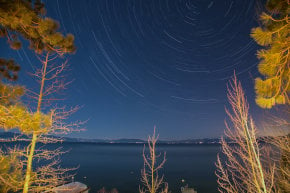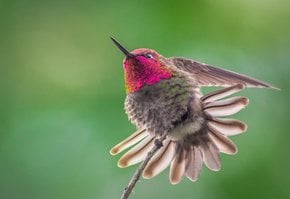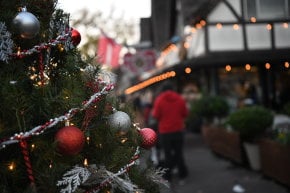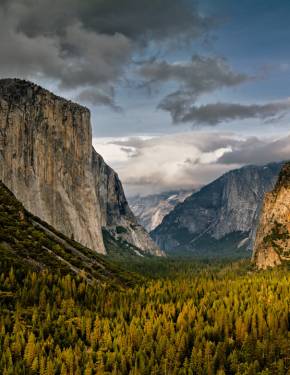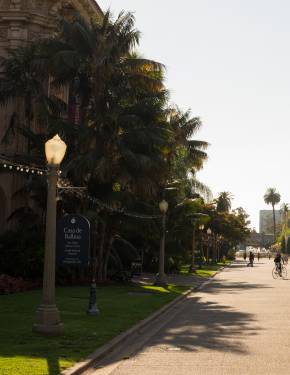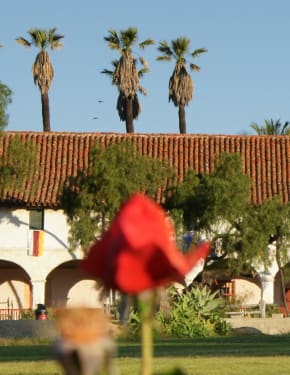Ladybug Migration in California 2026
Everyone loves a ladybug on their hand, but imagine hundreds of thousands! This can happen near San Francisco
Best time: November
During ladybug migrations in California, their clusters on tree branches can resemble red berries or tiny flowers. When these clusters cover entire tree trunks, the effect is even more striking and can be quite confusing. This captivating sight occurs as ladybugs move from cold to warm, wintering sites and then back again.
The best season to see ladybugs migrate
Adult ladybugs typically swarm in May and remain visible until November. In the San Francisco area, their winter gathering lasts from November to February, with late November being the best time to see them. By December, ladybugs start hibernating in tree trunk holes, making the red trees look striking with clusters of these beetles. This period is ideal for observing ladybug clusters before they emerge in spring to mate and return home.
Where can you see Ladybug Migration in California?
Ladybug invasions are unpredictable and often catch people by surprise. A notable event occurred in 2009 when a town in Colorado was overwhelmed by a massive ladybug swarm. In California, the best places to witness these migrations annually in late November are Muir Woods National Park and Redwood Regional Park, both near San Francisco. Muir Woods is more accessible and has ideal spots for ladybugs to hibernate, making it the top choice for seeing these stunning migrations.
San Francisco Area
Muir Woods National Park
If you visit Muir Woods this winter, you might spot thousands of red ladybugs with black spots clustering in fallen leaves near streams. Located less than 20 km from San Francisco, Muir Woods is known for these vibrant swarms, especially around the crossroads of Prince Trail and Stream Trail. Be careful where you step, as they can be found everywhere in the grass. Clusters are also visible in Mt. Tam State Park, particularly along the Bootjack Trail and Fern Creek Trail, about 20 feet from the Main Trail. Things to do in Muir Woods include participating in ranger-led programs and exploring nearby Muir Beach.
Hours & Tickets
Muir Woods is open daily with seasonal hours. Pets are not allowed. Reservations are required for parking and can be made at GoMuirWoods.com. There is a $15 per person entrance fee, which is separate from parking or shuttle reservations.
Redwood Regional Park
In Reinhardt Redwood Regional Park, particularly near the junction of the Stream and Prince Trails, thousands of convergent ladybugs (Hippodamia convergens) can be seen clustering from late October to mid-February. They gather on bushes, logs, fence posts, and beneath leaves, creating a captivating display that delights visitors of all ages. The ladybugs congregate primarily along the Stream Trail, between its intersections with the Prince and Eucalyptus trails. This 1,833-acre park boasts coast redwoods, evergreens, chaparral, and grasslands. It is home to rare species like the golden eagle and Alameda striped racer, as well as deer, raccoons, rabbits, and squirrels. The park offers four reservable picnic sites, group camping areas, and nearly 40 miles of trails for hiking, jogging, and horseback riding, including the East Bay Skyline and Bay Area Ridge Trails.
Hours & Tickets
Reinhardt Redwood Regional Park is open from 8 am to 6 pm. Parking fees of $5 per vehicle are collected on weekends and major holidays from April to October only at the Redwood Gate entrance.
Ladybug Lifespan
Ladybugs have a fascinating but brief lifecycle. They only live for about one year. Each generation will find the same spot, leading to another large ladybug congregation. Scientists believe that these beetles might follow pheromone trails left by previous generations, although the exact mechanism is still not fully understood. Although they lay eggs in the same areas, the new generation migrates in search of food and wintering sites. The clustering behavior helps them stay warm during the cold months and provides a high density of potential mates in the spring. After mating, ladybugs disperse to lowland habitats or the Central Valley to lay eggs and complete their lifecycle.
Safety Tips
Ladybugs might nip at you, but they generally avoid doing so. Their mouthparts are unlikely to break the skin, and their bites are not poisonous and do not transmit diseases. They use a defense mechanism called reflex bleeding, where they excrete yellow droplets from their joints to deter predators like birds and insects. This fluid can stain walls and clothing. To respect these creatures, observe them from a distance, as collecting them is prohibited, and they wouldn't survive if removed from their habitat.


























































